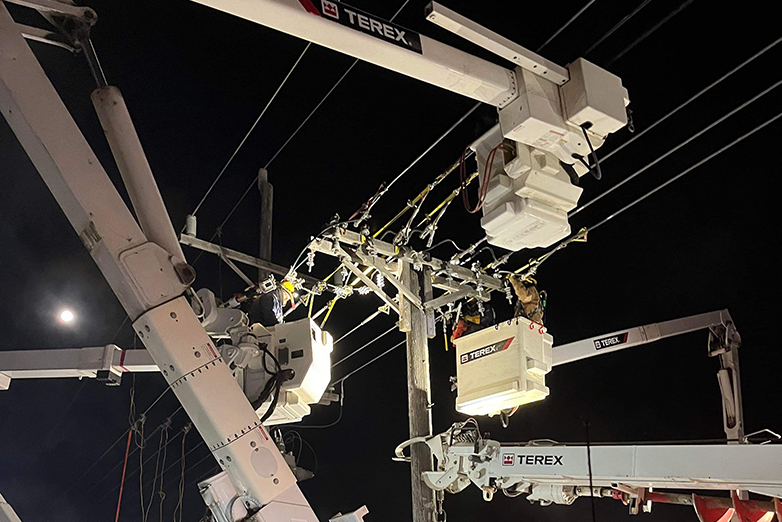Operating Bucket Trucks and Digger Derricks in Windy Conditions

Bucket trucks and digger derricks are used in many different weather conditions. Operation in conditions with too much or erratic wind can affect safe operation and should be avoided. Field crews need to determine if they can accomplish work safely in windy conditions at the job site. They should not just assume they can work in winds up to the OSHA restriction of 30 mph, as the safe speed may be much less.
Prior to Leaving
Before heading out, plan your route to confirm you are not traveling through an area with wind restrictions for large vehicles. Check for travel advisories. Check the boom, bucket, jibs, augers, or other attachments to be sure they are properly stowed and secured, and all doors and cargo, including chassis storage areas, are tied down and doors firmly shut and locked.
On Your Way
When in route to a job site during windy conditions, drivers of bucket trucks or digger derricks should heed cautions. Large tall vehicles are susceptible to being bounced around by the wind. Open highway, bridge crossings, and mountainous terrain are a few areas where wind gusts frequently occur, requiring extra caution.
As wind pushes against tall vehicles, it can become more difficult to stay in your lane. Braking and handling can also be negatively affected. Defensive driving is a must. Keep both hands on the wheel. Be sure to reduce speed, keep extra distance between yourself and the vehicle in front of you.
At Your Location
Once on site, if possible, use the terrain or structures available to reduce wind effect when setting up equipment, but be aware that when the boom or bucket extends above a roofline, for example, that wind speeds will be greater when near but not blocked by an obstruction.
While OSHA restricts use of this equipment when winds exceed 30 mph, often conditions are not safe at lower wind speeds. Safe operation can change for each situation, location, and work height. The people at the site are the only ones who can determine if it is safe. Among the risks that must be managed include maintaining required minimum distances between swaying objects, controlling loads being lifted, and protecting ground personnel.
Both sustained wind and gusting wind can cause oscillation or sway, but erratic changes in wind speed or direction, requires more caution. Regardless of the actual windspeed, conditions can make it difficult to maintain minimum distances between swaying booms and powerlines. If the boom sway and the line or pole sway is out of phase, it will cause them to move away then together which can also create a crushing hazard. If it is not safe to perform the task, operations should cease.
Ground personnel must also be considered and not allowed in the fall zone. If the boom tip moves away from the work area, it is possible tools or objects can fall on the people below and down wind. Likewise, a load that can’t be controlled while being lifted could create a crushing hazard for workers on the ground. Falling or flying debris is another hazard that should be assessed.

.png?sfvrsn=cfc0900d_0)